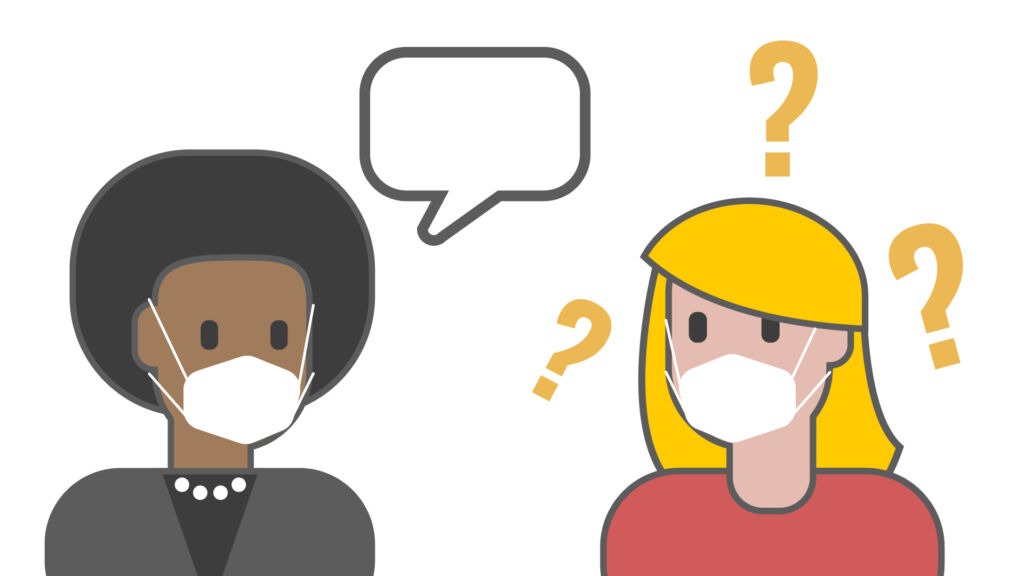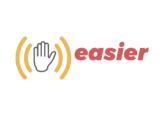On May 5, 2023, the World Health Organization declared that Covid-19 no longer represents a public health emergency of international concern. We are all relieved by the statement and eager to “return to normal”, but before we do that, we wanted to reflect on the challenges exposed in the last three years.
The Covid-19 pandemic was difficult for everyone, but some groups were affected more than others. Navigating a world characterized by social distancing, mask-wearing, and fragmented communication was especially hard on Deaf people. Covid-19 has further increased and highlighted existing inequities across many built and social environments. To better understand the difficulties Deaf people had to face, we asked our Deaf colleagues to share their personal experiences. Below, we outlined the most challenging aspects of their daily lives during the Covid-19 pandemic.
Face masks
| The facial expressions that are so important for conveying grammatical meaning in sign languages had vanished behind the masks. |
Facial masks were an essential tool widely used to slow the spread of Covid-19. However, the masks were blocking much more. They obstructed facial expressions and lip movement – critical sources of non-verbal information. And although, with time, some places started introducing clear face masks, access to such masks and their usage varied by setting, making it quite difficult for Deaf people to navigate unfamiliar social contexts and communicate effectively.
Access to information
The pandemic, especially in its early days, was a source of confusion and concern for everyone. However, for Deaf people, those feelings were exacerbated by the lack of accessible information. While hearing people had instant access to COVID-19-related information on radio and television, Deaf people were often left behind and learned about everything with a significant delay.
Access to essential services
Accessing essential services, such as education and healthcare, became very difficult for Deaf individuals during the pandemic. Many Deaf children have experienced limited remote schooling environments, inaccessible learning materials, and inadequate support from teachers during the crushing isolation of lockdown. Telemedicine platforms did not always provide translation services. Clinics and hospitals introduced strict visitor restrictions, which would often result in Deaf patients being denied an interpreter as many healthcare providers viewed them as a support person and not as someone integral to the Deaf individual’s healthcare. The insurmountable difficulties in accessing the health system meant that some Deaf people disengaged from health services altogether during the pandemic.

The experiences of Deaf people during the pandemic clearly demonstrate how policies and public health recommendations aimed at reducing the spread of COVID-19 have disproportionately affected their social well-being. Now that the pandemic is over, we look back and reflect on the measures that were introduced to slow the spread of COVID-19. Extensive research is being conducted to characterize the long-term impact of social distancing requirements, remote learning and so on. But there are also reasons to be positive. The pandemic presented a unique opportunity to develop a more inclusive infrastructure and policies, such as widespread implementation of closed captioning in telecommunications and speech-to-text applications. It is vital that we leverage the lessons learned during that difficult time and come up with new approaches and strategies to address the many challenges so starkly exposed by the Covid-19 pandemic.

